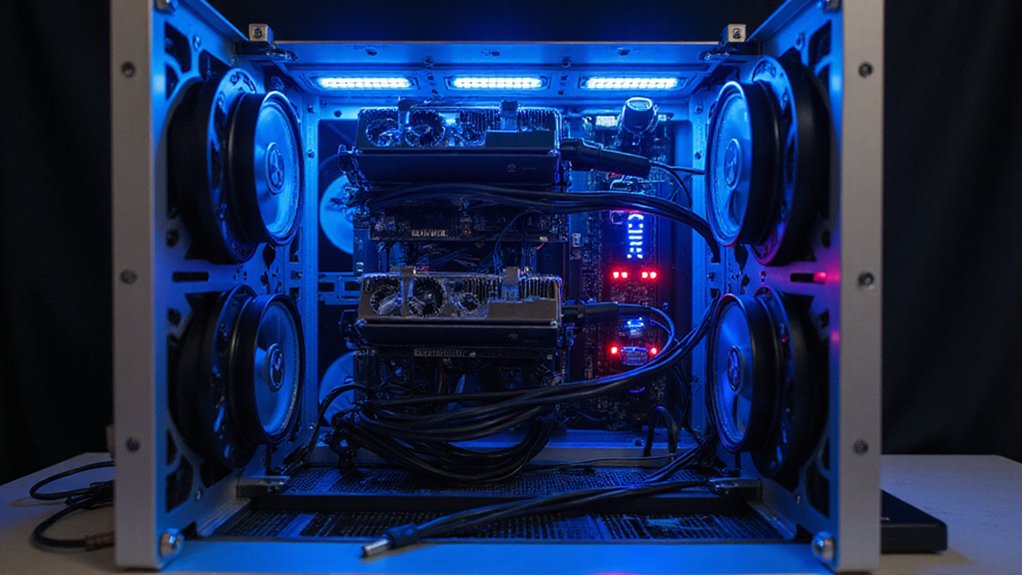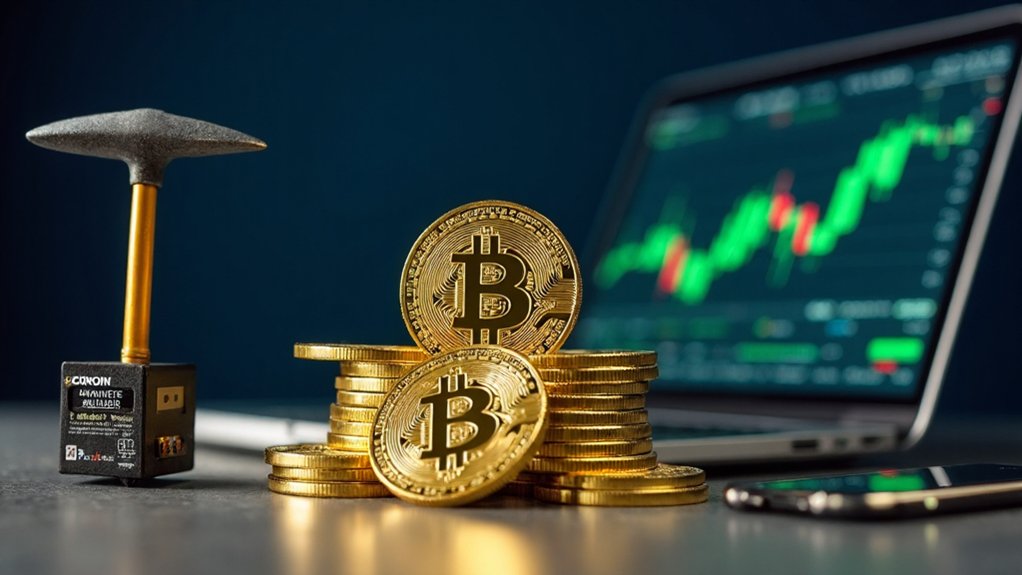A rug pull represents crypto’s darkest exploit: developers abruptly abandoning projects after collecting investor funds, leaving behind worthless tokens. These schemes flourish through social media hype, promises of astronomical returns, and minimal regulatory oversight on decentralized exchanges. Whether executed as hard pulls (immediate liquidity removal), soft pulls (gradual abandonment), or pump-and-dumps, the outcome remains identical—evaporated capital and shattered trust. Vigilant investors recognize warning signs: suspiciously rapid appreciation, operational opacity, and limited genuine community engagement. The financial graveyard awaits the uninformed.

A rug pull—perhaps cryptocurrency’s most notorious manifestation of financial treachery—occurs when crypto project developers orchestrate an elaborate exit strategy after amassing significant investor funds, leaving unsuspecting backers holding worthless digital assets.
This quintessential crypto scam typically unfolds after considerable hype generation, often leveraging social media influencers and promises of astronomical returns that would make traditional financial advisors blanch.
The perpetrators vanish with investors’ capital, having executed their scheme on decentralized exchanges like Uniswap or Pancakeswap, where regulatory oversight remains minimal at best.
These financial sleights-of-hand manifest in various iterations.
Hard rug pulls involve the abrupt removal of liquidity or complete project abandonment, creating an immediate and catastrophic devaluation.
Their more insidious cousins—soft rug pulls—entail gradual project abandonment, preserving a façade of legitimacy while developers quietly extract value.
Liquidity pulls, fake projects, and pump-and-dump schemes round out this repertoire of deception, each employing different mechanisms to achieve the same nefarious end. Similar to rug pulls, pump-and-dump scams artificially inflate cryptocurrency prices through coordinated hype before scammers sell their holdings at the peak, causing prices to collapse.
Vigilant investors might identify warning signs: suspiciously rapid price appreciation, implausibly generous promised returns (if something sounds too good to be true in traditional finance, it’s practically guaranteed to be fraudulent in crypto), operational opacity, and conspicuously limited genuine community engagement. These scams often entice victims by offering exclusive digital goods as additional incentives to participate.
These red flags, though often visible in retrospect, frequently remain obscured by the dazzling prospect of quick wealth.
The fallout extends beyond individual financial casualties.
Each successful rug pull erodes market confidence, precipitates calls for heightened regulation, and casts a pall over legitimate projects struggling to distinguish themselves from their fraudulent counterparts.
The term itself originates from the common idiom to pull the rug out from under someone, perfectly capturing the sudden loss experienced by investors.
Prevention demands rigorous due diligence: scrutinizing project teams, examining code through security audits, and evaluating community legitimacy.
In cryptocurrency’s Wild West landscape, where fortune favors both the bold and the suspicious, rug pulls serve as expensive reminders that financial innovation, for all its promise, creates novel opportunities not just for wealth creation but for its redistribution through increasingly sophisticated chicanery.
Frequently Asked Questions
How Can Investors Protect Themselves From Potential Rug Pulls?
Investors can shield themselves from rug pulls through rigorous due diligence—examining team credentials, tokenomics, and code audits (which, remarkably, many skip entirely).
Prudent strategies include diversifying crypto holdings, exercising skepticism toward meteoric price rises and grandiose promises, and monitoring liquidity patterns.
Engagement with established communities provides vital intelligence, while limiting exposure to new, unproven tokens (however enticing their projected returns) represents perhaps the most fundamental protection against these increasingly sophisticated financial vanishing acts.
What Are the Legal Consequences for Rug Pull Perpetrators?
Perpetrators of rug pulls typically face a constellation of charges—wire fraud, securities violations, and money laundering being the triumvirate of legal comeuppance.
Convictions can result in felony sentences reaching 20 years imprisonment and fines stretching into millions.
Authorities increasingly coordinate across borders to freeze assets, with courts often mandating restitution.
Emerging legislation, such as New York’s proposed bill, seeks to criminalize rug pulls specifically—eliminating the traditional requirement to prove fraudulent intent, much to developers’ chagrin.
Can Stolen Funds From Rug Pulls Be Recovered?
Recovery of funds from rug pulls remains notoriously difficult.
The decentralized, pseudonymous nature of blockchain—so celebrated for its privacy features—becomes a considerable liability when malfeasance occurs.
Technical barriers exist alongside jurisdictional complications, with stolen cryptocurrencies often dispersed through mixers or privacy-focused chains.
While some high-profile cases have seen partial recoveries through law enforcement intervention, most victims find themselves in the unenviable position of funding blockchain forensics without guarantee of restitution.
Are Certain Blockchains More Susceptible to Rug Pulls?
Certain blockchains do indeed present varying degrees of rug pull vulnerability.
Newer Layer 1s with immature security protocols, chains specializing in high-yield farming, and memecoin-focused ecosystems typically face elevated risks.
BSC’s history of rapid, unvetted token launches makes it particularly susceptible, while Solana’s low-cost infrastructure enables swift pump-and-dump schemes.
Meanwhile, chains with robust reputation systems, mandatory code audits, and multi-sig liquidity requirements (like Ethereum’s established Layer 2s) generally offer stronger safeguards—though no blockchain remains entirely immune.
How Do Rug Pulls Differ From Legitimate Project Failures?
Rug pulls differ from legitimate project failures primarily in intent and execution.
While both may result in investor losses, rug pulls are deliberately orchestrated scams where developers plan to abscond with funds from inception.
Legitimate failures, conversely, stem from market conditions, poor execution, or genuine business challenges.
The former typically features anonymous teams, unrealistic promises, and sudden liquidity removal; the latter often involves transparent communication throughout the project’s decline and possible partial investor recovery—sometimes even offering valuable industry lessons.









